 |
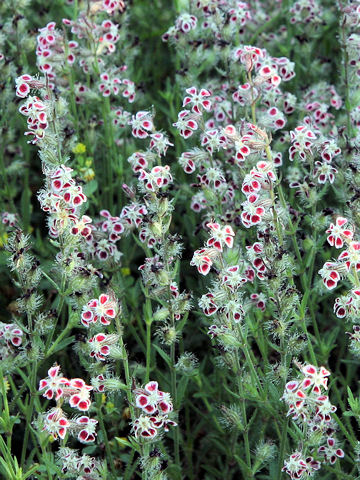

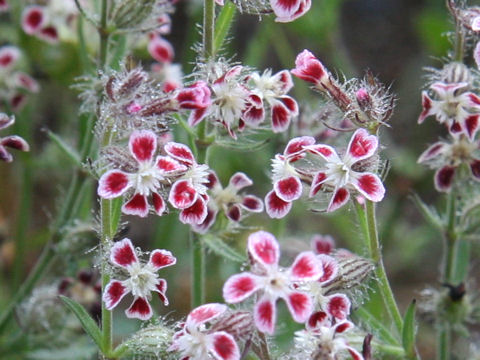

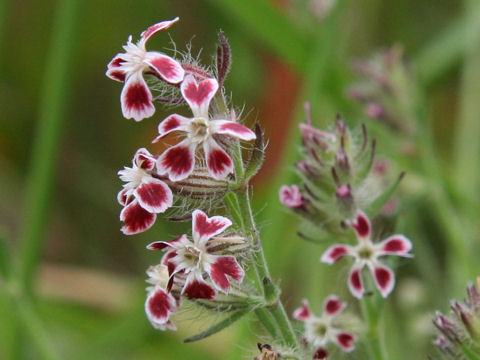

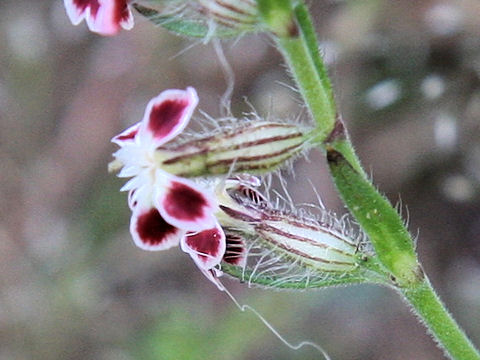

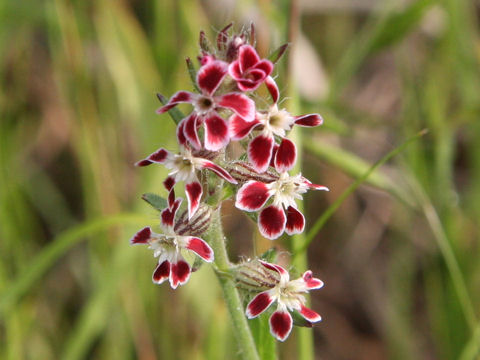

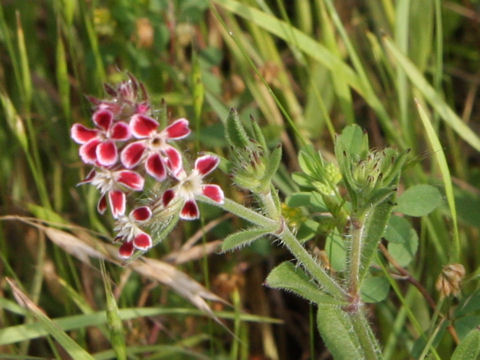

|

|
[bpª´YÅ·BíªÖÍA]ËãÌúÉnµÜµ½B»ÝÅÍA{Bȼ©çlEãBÌCÝ¢âsXnðͶßA¢EenÉA»µÄ¢Ü·B³ÍQO`ROZ`ÉÈèÜ·BsÍtÍJoÑâZ¢BÑÉííêÜ·Bt©çÄÉ©¯ÄAs¸ÉäóÔð¾µAFÌnÉgFÌÁÌ éÔð穹ܷBäÓÍÂÚ`ÅPOÂÌŪ èAÔãÉcçñÅ`ÉÈèÜ·B¿ÈÝɱÌu}e}vÍA]ËãúÉnµ½Æ«Ìu}e}vª]æaµ½àÌÅ·B±Ìê¹É¢ÄÍAqìx¾YmÌuÞ¬¹ñ̤iAgrostemma githagojÌ®¼ª]æaµ½vÆ¢¤àÆA[óÌuÍÜ×}e}iSilene maritimajª]æaµ½vÆ¢¤àª èÜ·B
|

|
ifVRÈ}e}®ÌzNÅAw¼Í Silene gallica var. quinquevulneraBp¼Í Spotted catchflyB
|

|
The Spotted catchfly (Silene gallica var. quinquevulnera) belongs to Caryophyllaceae (the Carnation family). It is a biennial herb that is native to Europe. This herb was introduced into Japan in in the late Edo period (1603-1868). Nowadays it is naturalized westward from Honshu to Shikoku and Kyushu of Japan, and all over world. This herb occurs in coasts or urban districts and can reach 20-30 cm in height. The stem and leaves are covered with erect hairs and short glandular hairs. The spikes are borne on the stem apices and bloom flowers from sping to summer. The flower has a magenta mottle against a white backround. The calyx tubes are urceolate with 10 ribs and swell to ovate after flowering. Incidentally, the word "mantema" is a corruption of "manteman", which was used when the plant was introduced to Japan in the late Edo period. There are two theories as to the origin of this word: Dr. Tomitaro Makino's theory that it is a transcription of the genus name "Corn cockle" (Agrostemma githago), and Tadashi Fukatsu's theory that it is a transcription of "Sea campion" (Silene maritima).
|

|
{ãEP] ïé§_²s{cÉÄA2008N0610úBeB
[Q] çt§æs¢ÊìÉÄA2008N0602úBeB
[R] ïé§_²sy¼ÉÄA2008N0527úBeB
[SEº] ïé§_²sîcÉÄA2008N0528úBeB
|





